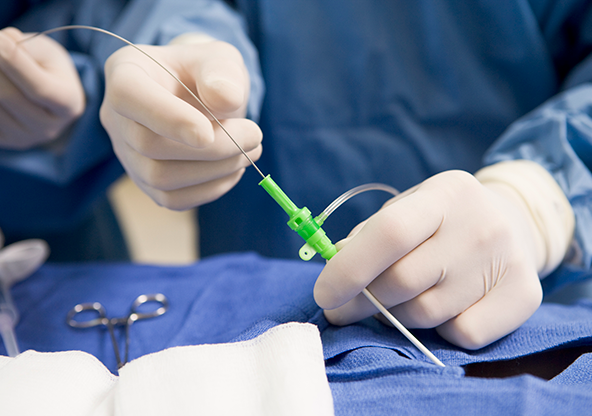Angioplasty
What is Angioplasty?
Patients experiencing difficulties with proper blood flow to arteries in the heart may be recommended by their physician to have an angioplasty. The purpose of this procedure is to rebuild coronary artery blood flow within the narrowed artery. Each case of coronary artery disease (CAD) doesn't require an angioplasty, which is why it is important to discuss with your doctor what how to treat your CAD.
How Does it Work?
Angioplasty is a common procedure our physicians use to reduce the narrowing in your artery without surgery. Performing an angioplasty involves a thin tube (catheter) with a small inflatable balloon on the end, which is positioned within the narrowed section of the artery. Inflation of the balloon tip opens the narrowed artery by splitting and compressing the plaque and slightly stretching the wall of the artery. The balloon is then deflated and removed from the artery.

Are There Risks that Come With Having An Angioplasty?
Just like any surgical procedure, there is always a possibility of risks being present. Some of the risks that may come with having an angioplasty procedure include:
- At the site where your physician will insert your catheter for the physician, there may be a small amount of bleeding
- Blood clotting or damage within the blood vessel the physician is treating
- InfectionIrregular heart patterns
- Possibility of having a heart attack
- Possibility of having a stroke
- Uncomfortable sensation in the chest
- Kidney damage
- Dye used to create contrast within the artery may cause an allergic reaction
- Your coronary artery may rupture or completely shut down which would mean your physician would have to perform open heart surgery

Recovering from an Angioplasty
As you recover from your procedure, your physician will advise you to be aware of the following symptoms:
- Having a fever or feeling like you have chills
- Persistent pain, inflammation, or drainage at the catheter insertion site
- Feeling a sensation of cold, numb, or tingle in the limb where the procedure took place
- A feeling of pressure or pain in your chest
- Extreme sweat
- Feeling like you may faint
- A feeling of nausea or that you may vomit
- Wooziness or a feeling of being unsteady
